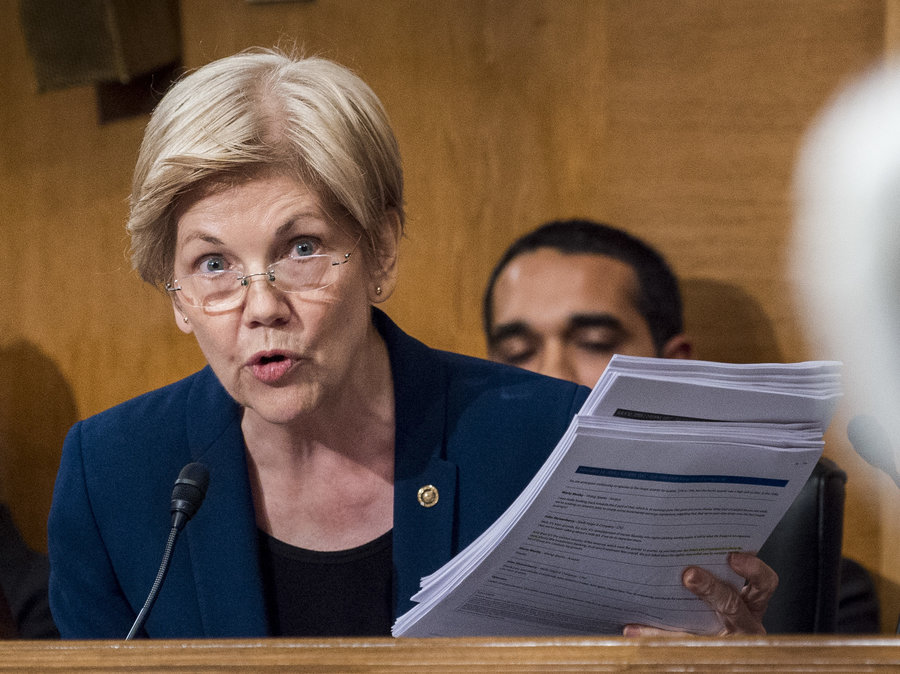Tax Credits Can't Save Failing Bon-Ton Stores
We're going to stay thematically on-point. If you missed us last week, we recommend that you go back and read our take on the Cenveo bankruptcy. In fact, we owe an apology to some of you: there were about 400 of you who did not get our a$$-kickingness at all due to an inexplicable Mailchimp screw-up. Mailchimp ≠ a$$-kicking (more on this soon). Anyway, here is a link to the entire newsletter.
A quick preface:
Protection of dying industry extends beyond federally-imposed #MAGA (see, e.g., coal, solar tariffs), and trickles down to local communities. Indeed, local-level legislators are looking at tax credits to prop up industry in the wake of, among other things, Appvion’s chapter 11 bankruptcy (and job cuts) and Kimberly-Clark’s reorganization (and mass job cuts). This is familiar: tax incentives to prop up industry aren’t extraordinary. Sheesh, just look at all the governors getting bent in the hope of drawing Jeff Bezos’ attention. The question is, though, how sound is the social contract? How many dying industries can we as taxpayers prop up all at once? We don’t have an answer. But keep reading.
******
Inside and outside of the startup context, people often ask stupid questions about companies. "How many employees does it have?” That’s a regular one. Or “How many locations?” Also common. “What’s revenue?” Irrelevant on its own. Uber makes a ton of revenue but is still bleeding cash. Netflix has gobs of revenue but is free cash flow negative. Cenveo, as we noted last week, had $1.59 billion of gross revenue in ’17. Now it’s in bankruptcy court.
What if we told you about a particular business that had 23,000 employees and that those employees had an average tenure of 12 years? That had 256 locations. That owned 22 properties. That made $2.55 billion - yes, BILLION - in revenue in 2017. That would sound like a pretty damn successful company wouldn’t it?
It’s not.
We omitted some key data points: like the company’s capital structure and business vertical.
Here’s the capital structure:
- a Tranche A revolving credit facility of up to $730mm
- a Tranche A-1 term facility of up to $150mm
The interest rate on the debt is a formula but, if we understand it correctly, it was no less than 9.5%. Funded debt as of Monday was $339mm under Tranche A (ex-interest), $150mm under Tranche A-1 (ex-interest of $3.9mm), and millions more in letters of credit.
The company also has $350mm of 8% senior secured notes outstanding (Wells Fargo Bank NA) and due in 2021. Combined with the above debt, that’s a hefty interest expense. Oh, and the company is publicly-traded. Because this particular company is NOT successful - and with equity ranking in “absolutely priority” below debt - we reckon that there are a lot of Moms and Pops eating sh*t right now in their personal accounts. They won’t be the only ones.
The problem is that this company operates in an “increasingly challenging retail environment.” And, therefore, its story - The Bon-Ton Stores story - is wildly unoriginal. In the company’s words, "Like many other department store and retail companies, the Debtors have been subjected to adverse trends in the retail industry, including consumers’ shift from shopping in brick-and-mortar stores to online retail channels. Bon-Ton, with a significant geographic operating footprint and operating presence, is dependent on store traffic, which has decreased as customers shift increasingly toward online retailers. In addition to competing against online retailers, Bon-Ton faces competition from other established department stores, such as J.C. Penney, Kohl’s and Macy’s.” It's like a zombie cage fight.
More specifically, it continues, "The department store segment of the U.S. retail industry is a highly competitive environment that has evolved significantly in response to new and evolving competitive retail formats, such as the increased prominence of mass merchandisers and increased competition among national chain retailers, specialty retailers and online retailers, as well as the expansion of the internet and, most significantly, the ubiquitous role that mobile technology and social media now play in the retail consumer shopping experience. The Debtors’ results and performance (and that of their competitors) has been significantly impacted by the aforementioned factors in the U.S. retail industry. Presently, numerous business and economic factors affect the retail industry, including the department store sector. These include underemployment and the low labor participation rate, fluctuating consumer confidence, consumer buying habits and slow growth in the U.S. economy and around the globe.” But, but…#MAGA?!?
Given these factors, the company has been engaged in a tug-of-war with its senior creditors for the better part of months. We’ll spare you the back-and-forth but suffice it to say, no concrete long-term plan that would’ve avoided bankruptcy came to pass. Only the retention of a liquidation agent to close 42 stores. And acquisition of a new $725mm credit facility to fund the cases while the company scrambles to find a buyer. Or liquidate.
Remember all of those shiny, positive numbers up above? Um, yeah.
It gets worse. Though they were ultimately shot down - at least for now - in court yesterday (Feb 6), the bondholders argued “that the best and only available path for the Debtors to maximize value for their creditors in these freewill bankruptcy cases is to conduct an immediate orderly liquidation of the Debtors’ inventory and other assets. The Second Lien Noteholders made this determination after conducting their own due diligence, and following repeated missteps by the Debtors and their various boards and management teams, who proved themselves unwilling and/or unable to adapt to the fierce headwinds facing brick and mortar retailers and in particular, department stores”(emphasis in original). Savage.
Unwilling. Or unable. To adapt. Sadly, this seems to sum up a lot of distressed retailers these days.
Even sadder, remember those long-tenured 23k employees we mentioned above? Per the company, “[Bon-Ton] has been part of its employees’ and customers’ lives in their communities for years.”
Probably not for much longer. At this point, no tax credits can change that.























